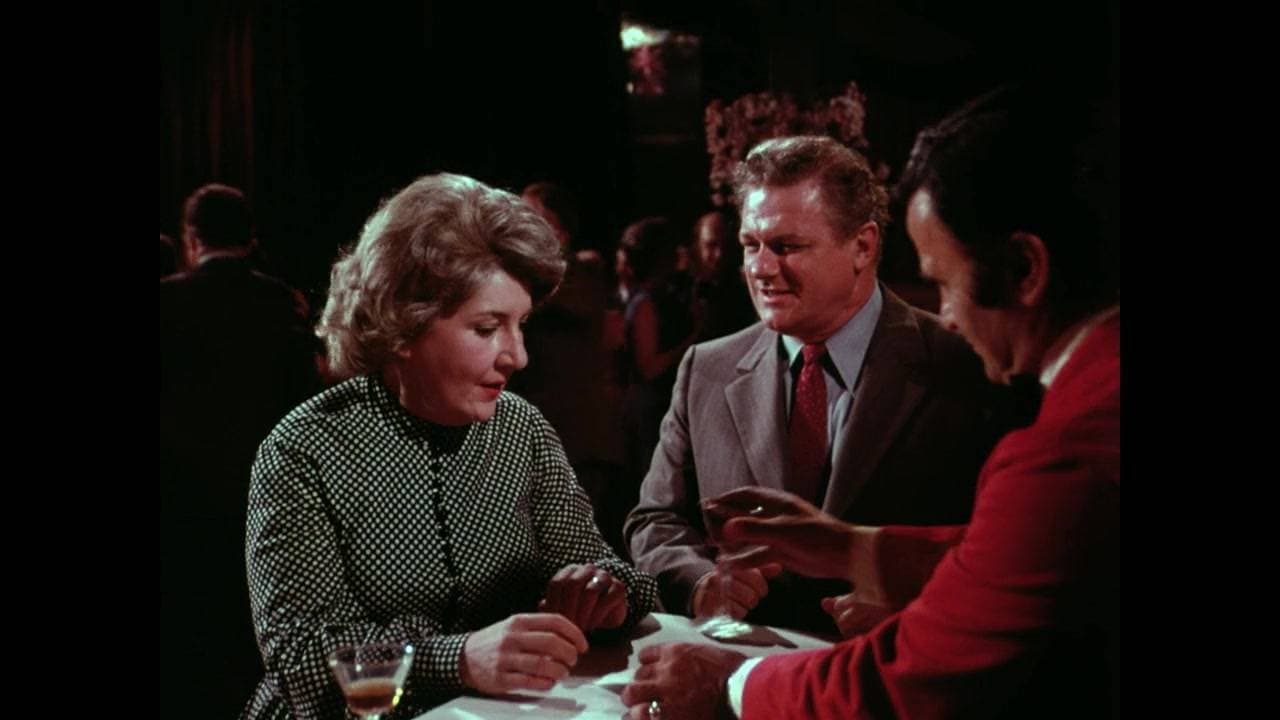

Maureen Stapleton gives a fine performance in this simple and straightforward story of an older woman trying to get on with her life after her husband dies.Stapleton's performance aside, the film has the look and feel of a typical 1970's made-for-TV movie of the week. In addition to period costumes and props, the visuals are very dark. And the background music is annoyingly nondescript. Further, I did not care for the plot device wherein Stapleton's character suddenly bursts into non-melodic song, at odd moments. It seemed unnatural and intrusive.A big part of the plot takes place at the ballroom. Here, the filmmaker could have included well-known songs from the big band era, songs that viewers could identify with. But, for whatever reason, the filmmaker passed up this opportunity, and chose instead more nondescript music that quickly becomes tiresome.Although this film is not bad, it was a disappointment to me. But other viewers may find interest in it, especially if they're looking for a low-key, sentimental story, or a film with a fine performance from Maureen Stapleton.
... View MoreI was enchanted from the start. The music gave an air of wonderment that one could only expect to carry throughout the rest of the film. Main character, Bea, was a very sweet woman who was truly loved by her family, even her in-laws.Bea's first song, after her husband had died, was so moving. "Who am I going to cook and clean for ... who's going to balance the check book." It showed so beautifully, how a long married couple can come to rely on each other even for the simple things; even just to be there. Her voice, too, was so weak and shaky, which made it strike an even deeper chord, one that a clear, perfect voice never could have.Then Bea gets whisked off to the Stardust Ballroom by her friends and meets a very interesting man, who seems totally in love with her, if a bit pushy. But, Bea, ever so endearingly old-fashioned keeps him at arms length and sends him home to be sure nothing improper would take place. He's still enchanted. Awwww, how sweet.Ha! That's when everything quite quickly changes, taking every bit of enchantment, beauty and old-fashioned sweetness out of the rest of the film. Bea invites her new beau, Al, up to her bedroom.That may be excusable, and I may move on and still enjoy the remainder, but then the same Al who pursued Bea and got her into bed casually announces he's married and Bea decides they just won't discuss it. Ugh! They go on with their affair and she even tells her family, including grandchildren, that the man she's seeing is married.This was all totally out of character. Taking him to her bedroom was unbelievable in the first place, but when you throw in Al's spouse it is unforgivable. It taints the entire movie and because of this disturbing and completely unnecessary twist I would not recommend it to anybody. The rest of the film would have been infinitely better without Al's wife.
... View MoreTrue to life. Durning and Stapleton, the chemistry is perfect. Durning and Stapleton are phenomenal. A story for our times. Such comments are more than adequate for this fine story.Bea Asher is widowed at middle age. She sings of her loneliness and the deprivation brought about by her husband's passing.Bea is about to settle down to a grim widowhood, when a waitress, in a restaurant, tells her that you start living once your husband has died.Though this statement is shocking, Bea goes with the woman to the Stardust Ballroom, a carefree lounge where couples dance to their pleasure. While there, Bea meets postman Al Green and the two are a match made up in heaven. Bea dances up a storm, changes that gray hair to bright red and becomes a live-wire not quite almost as Stapleton depicted in Woody Allen's "Interiors." Life has more meaning now, despite the anger conveyed by her pristine daughter and sister, Helen, shown in a memorable scene by Charlotte Rae.The ending may be considered a downer but the author really had nowhere else to go. Available on DVD, see this film. It will warm your heart and get those shoes out for some fine dancing!
... View MoreI haven't seen this film in over 20 years and yet I still recall scenes from it quite vividly. The performances by both Stapleton (who I was researching now when I saw this film in a list of her credits) and Durning are both wonderful. The characters seemed very "real"...even more so when the film came out, as back then middle aged+ characters were *very rare* as romantic leads in a movie. And it's also quite touching. I recall crying quite a bit near the end on the 3 occasions I saw this movie on TV years ago. Bravo to Stapleton and Durning for this one!
... View More